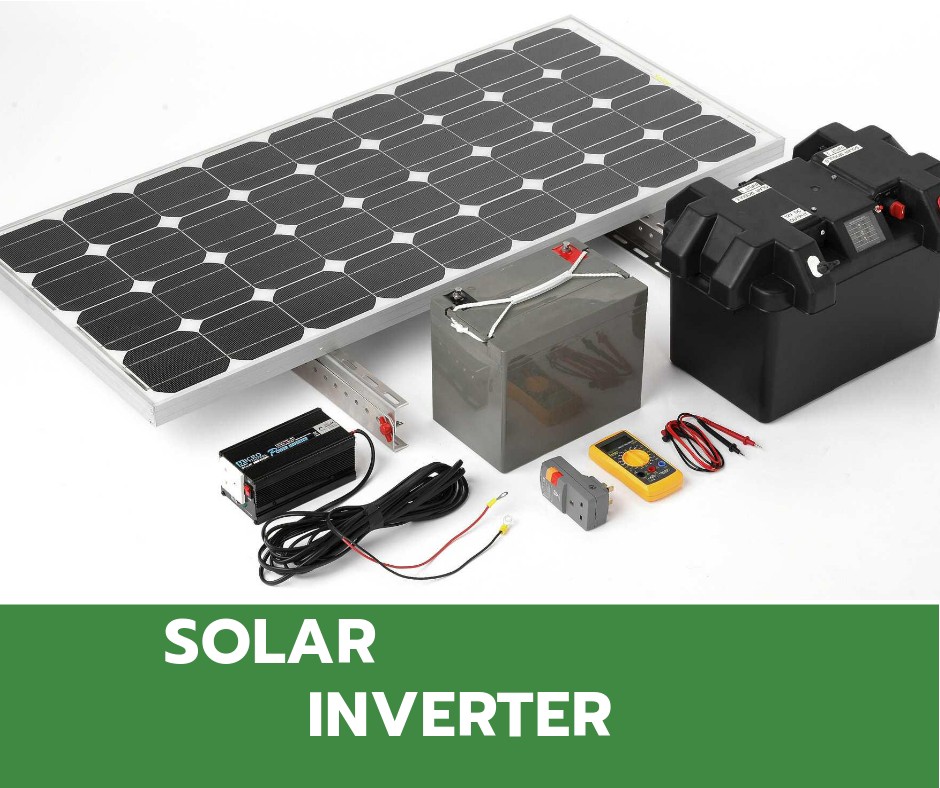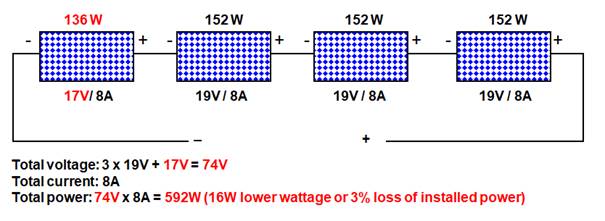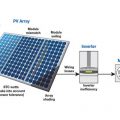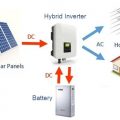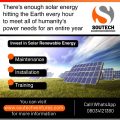- August 1, 2019
- Posted by: SouTech Team
- Category: Alternative Energy- Solar and Inverter, Blog, Others
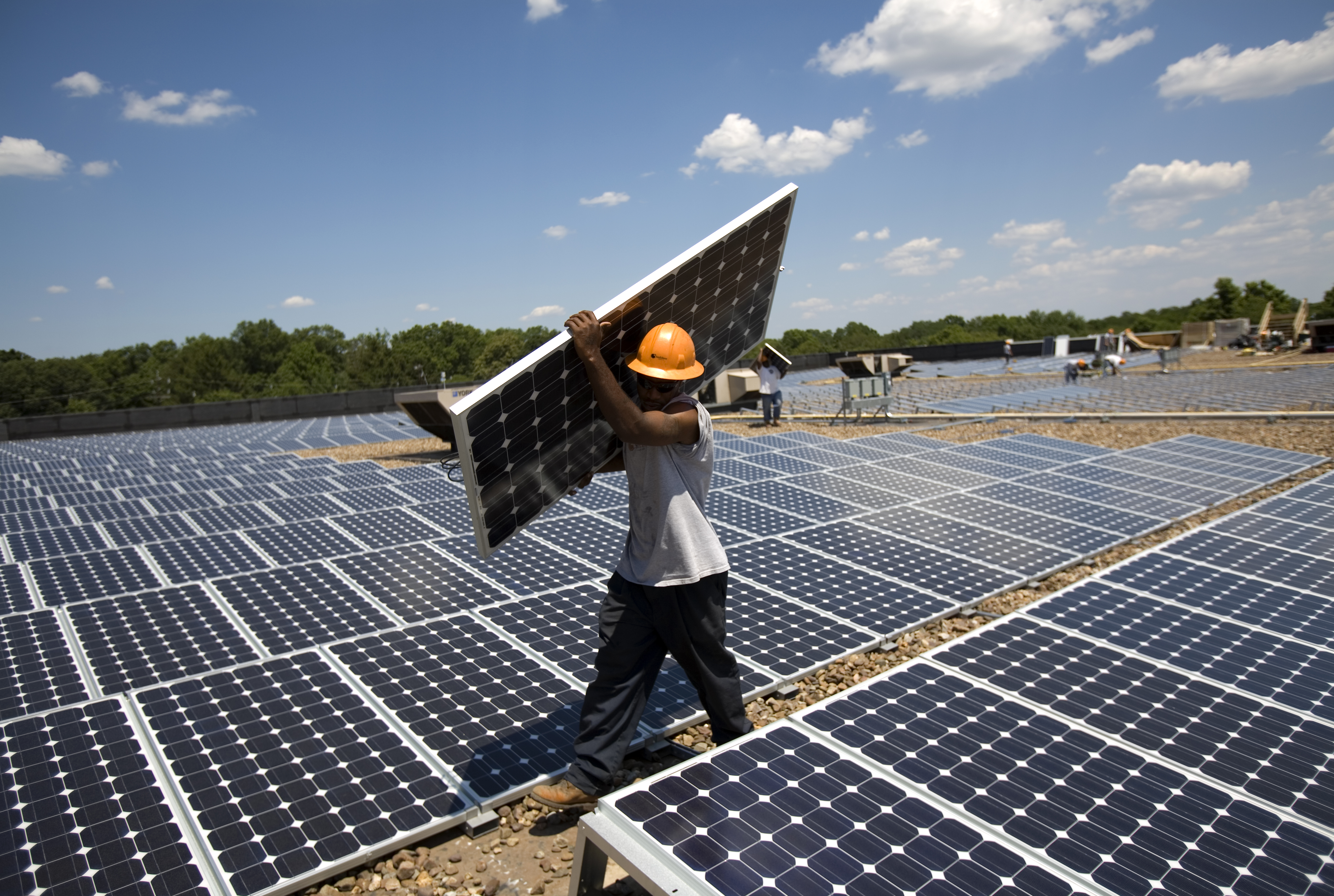
WHAT A SOLAR INVERTER IS:
Solar inverter system (photovoltaic) is a solar technology that uses the electrical properties of various types of semiconductor materials to directly convert sunlight into electric power.The resulting electricity is direct current .The basic physical process is known as the PV effect. When high photons of sunlight strike a semiconductor material and are absorbed, the energy is transferred to the electrons in the semiconductor material.This process occurs continuously as the semiconductor material is exposed to daylight .
WHY A SOLAR INVERTER IS NEEDED AND IT’S ADVANTAGES
When talking about alternative power solutions, someone always tries to make the correlation between a solar inverter system and a generator set. A solar inverter system can be explained as a generator that uses the battery as its fuel tank.
BUT WHICH IS BETTER
GENERATOR: Generators are an AC power supply that uses fossil fuel (diesel or petrol) to run an engine. One of the major drawbacks of a generator is they can be inefficient and waste a lots of fuel if they are not run at the appropriate load. Generators also unnecessarily pollute the environment. If your generator is run below 75 percent of its rated capacity, this can cause carbon building on the critical engine components, shortening the life span of your generator’s engine. In addition, generators are noisy and expensive to run and maintain.
SOLAR INVERTER SYSTEM:
Solar inverter system are also AC power supplies but they use stored DC electrical energy in a battery or battery bank. They use electronics and transformers to modify the DC to AC and then boost the voltage to create 200v.Solar inverters are extremely efficient, even when compared to generators, and only consume DC power in direct relation to the amount AC power they put out.
COMPONENTS AND ITS CHARACTERISTICS:
SOLAR PANEL (Photovoltaic cells): PV cells are one way of generating electricity from solar energy.They are not the most efficient, but they are the most convenient to use on a small to medium scale. PV cells are mostly made from silicon (though a number of non silicon based methods are being developed. They are two types of panels, monocrystalline silicon and polycrystalline silicon which can be connected either in series or parallel .When connecting in series ,the voltage(V) is added to get higher voltage while connecting in parallel the current (A) is also added to achieve higher current.
BATTERY : As your electrical power usually needs to be available when the sun is not shining, it usually necessary to store electricity .They battery collect the DC power from the solar panels and stored. They are different types of batteries but the most prefer one that used in solar system are deep cycle battery. Batteries used in solar system, help to supply surge or high peak operating currents to electrical loads or appliances. It also functions as energy storage capacity and autonomy. It supplies power to electrical loads at stable voltages and currents by suppressing or smoothing out transients that may occur in the PV system.
WANT TO LEARN BOUT SOLAR ND BECOME N EXPERT WITH FIELD WORK TRAINING? CLICK BELOW
SOLAR ND INVERTER TRAINING IN NIGERIA
INVERTER:
Inverters are the hardest working component of a solar array. They are solely responsible for more operational functions than any other PV system component. These duties have continued to grow as systems get smarter and increase interaction with the utility grid. The basic function of an inverter is to convert the direct current (DC) power that solar panels create to alternating current (AC) power that is useful in homes and businesses or fed directly into the grid in front of the meter projects (utility scale solar arrays). Inverters are responsible for continuously tracking the solar array’s voltage to identify the
maximum power at which the modules can operate.
CHARGE CONTROLLER:
Lead Acid batteries will be damaged if overcharged, or their voltage pushed too high by continuing to charge with a high charge voltage.Therefore it will be necessary to connect a charge controller between the solar panels and the battery. When charging from the battery from a low state, it will effectively connect to the solar panels to the battery until a certain pre-set voltage is achieved. Most controllers however will use Pulse Width Modulation (PWM) to continue charging a battery to near its maximum, after a certain voltage has been reached. A further development of the charge controller is the Maximum Power Point Tracker (MPPT)charge controller which gives improved efficiency.
BASIC INSTALLATION GUIDE
ENERGY AUDIT: Before choosing the components, we have to calculate what is our load, how much time it will run and the budget of the client.
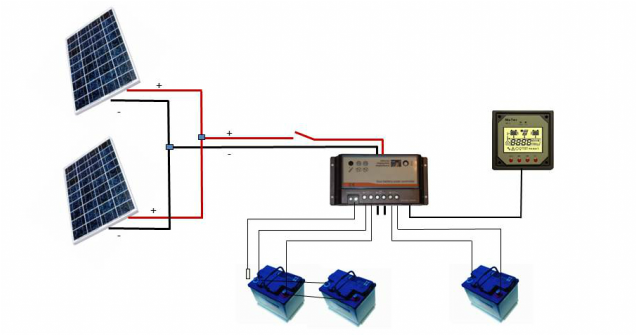
1. We decide what appliances(light,fan,Tv etc) we want to run and how much time(hour).
2. We check the specification chart in our appliances for power rating.
3. We calculate the Watt Hour which is equal product of power rating of our appliances and time
(hr) of run.
4. We calculate the total Watt Hour:
SELECTION OF INVERTER:
Solar panel(PV) that receive the sun’s rays and convert them into electricity called direct current (DC). DC is then converted into alternating current (AC) through a device called an Inverter. AC electricity flows through every outlet of your home,powering the appliances.The power rating should be equal or more than the total load in watt at any instant. Apliances like fridge,hair drier,vacuum cleaner,washing machine etc likely to have their starting power consumption several times greater than their normal working power (typically this is caused by electric motors or capacitors in such appliances). This should be taken into account when choosing the right size of inverter.
SOLAR PANEL SELECTION: Solar panel converts the sunlight into electricity as direct current (DC). These are typically categorized as Mono crystalline and Poly crystalline.Mono crystalline are costlier and more efficient than poly crystalline panel. The rating of solar panel should be selected in such way that it will charge the battery fully during the one day time.
BATTERY SELECTION: The output from the solar panel is DC power. This power is generated during the day time only. So if you want to run a DC load during day time then it seem to be very easy.but doing this is not a good decision because most of the appliances need a constant rated voltage to run efficiently. Solar panel voltage is not constant,it varies according to the sun light.If you want to run the appliances during night then it is possible.The above problem is solved by using a battery to store the solar power during the day time and use it according to your choice.It will provide constant source of
stable,reliable power.
CONCLUSION: A solar inverter system is easily able to replace any power supplier,with the use of
sufficient solar panels.The long-term benefits of such an investment require no justification.
 Attend SOUTECH Comprehensive Cyber Security, Ethical Hacker, Kali Linux Training and Learn over 100 tools + Information Security Policy Creation and Implementation. Become an Expert TODAY
Attend SOUTECH Comprehensive Cyber Security, Ethical Hacker, Kali Linux Training and Learn over 100 tools + Information Security Policy Creation and Implementation. Become an Expert TODAY
SMS Name,Location,Interested with course(see below) of choice to 08034121380
Professional Web Design, Cybersecurity, Hacking, Networking, Kali Linux, Mobile App Development, Project Management, Professional Digital Marketing, Business Analysis, Microsoft Power BI, Python for Data Science, PHP Software Development, IBM SPSS Research and Statistical Analysis, Excel for Business, Solar and Inverter Design and Installation and so many others….
Want to take an online course because of your distance to Abuja, Owerri or Lagos?, Indicate in your SMS or enroll using this link>>>>
REGISTER NOW
Click to start learning while you earn and grow…

